|
presents THIS DAY IN GAY HISTORY based on: The White Crane Institute's 'Gay Wisdom', Gay Birthdays, Gay For Today, Famous GLBT, glbt-Gay Encylopedia, Today in Gay History, Wikipedia, and more …
Collected by Ted May 1 [{(o)}]|[{(o)}]|[{(o)}]|[{(o)}]| [{(o)}]|[{(o)}]1650 – Following the beheading of Charles I and Oliver Cromwell's rise to power, sodomy was made punishable by death in England, along with adultery.
1855 – Marie Corelli (d.1924) was a British novelist. She enjoyed a period of great literary success from the publication of her first novel in 1886 until World War I. Corelli's novels sold more copies than the combined sales of popular contemporaries, including Arthur Conan Doyle, H. G. Wells, and Rudyard Kipling, although critics often derided her work as "the favourite of the common multitude.Mary Mackay was born in London, the illegitimate daughter of Scottish poet and songwriter Dr. Charles Mackay and his servant, Elizabeth Mills. In 1866, eleven-year-old Mary was sent to a Parisian convent to further her education. She returned to Britain four years later in 1870. Mackay began her career as a musician, adopting the name Marie Corelli for her billing. Eventually she turned to writing and published her first novel, A Romance of Two Worlds, in 1886. In her time, she was the most widely-read author of fiction. Her works were collected by Winston Churchill, Randolph Churchill, and members of the British Royal Family, among others. Corelli's eccentricity became well-known in Stratford, where she spent her later life. She would boat on the Avon in a gondola, complete with a gondolier that she had brought over from Venice. She died in Stratford and is buried there in the Evesham Road cemetery. Her house, Mason Croft, still stands on Church Street and is now the home of the Shakespeare Institute. For over 40 years, Corelli lived with her companion, Bertha Vyver; when she died she left everything to her friend. Although she didn't self-identify as a lesbian, biographers and critics have noted the erotic descriptions of female beauty that appear regularly in Corelli's novels. Descriptions of the deep love between the two women by their contemporaries have added to the speculation that their relationship may have been romantic. Following Corelli's death, Sidney Walton reminisced in the Yorkshire Evening News:
One of the great friendships of modern times knit together the hearts and minds of Miss Marie Corelli and Miss Bertha Vyver.… Her own heart was the hearth of her comrade, and thought and love of 'Marie' thrilled through Miss Vyver's veins… In loneliness of soul, Miss Vyver mourns the loss of one who was nearer and tenderer to her than a sister… Over the fireplace in the fine, old spacious lounge at Mason Croft the initials M. C. and B. V. were carven into one symbol. And it was the symbol of life.
1874 – American artist Romaine Brooks' life-sized female nudes and portraits of cross-dressed women made her lesbian identity and desire visible to the world. (d.1970) Beatrice Romaine Goddard was born while her mother was traveling in Rome. She was the newest addition to a wealthy but severely dysfunctional family from Philadelphia. The child's father abandoned the family shortly after her birth. The artist's mother was a cruel narcissist and an erratic parent who left her infant daughter with a family laundress in the United States while she traveled throughout Europe with her other children. As a young woman, Beatrice was, however, able to convince her mother to allow her to study voice near Paris from 1896 to 1898. Although she was given only a tiny allowance and suffered financial hardships, she ultimately decided that her true calling was to the visual arts. Beatrice traveled to Rome in 1898 and began to take free painting classes. In 1899, she vacationed in Capri, where she met a cadre of expatriate American and English artists and writers, many of whom were involved in same-sex relationships. Soon after the turn of the century, Brooks's fortune improved, after mother died of diabetes. Much to her surprise, the artist had inherited, at the age of twenty-eight, the entire family fortune. Her new financial independence allowed her artistic freedom and provided entrée to the salons and homes of the European elite. The artist moved to London in 1902 and agreed to a marriage of convenience with John Ellingham Brooks, an impoverished, but socially prominent, gay pianist. They separated after three months, and Brooks continued to support him the rest of his life. She further reinvented her identity by dropping the feminine name Beatrice and keeping her married surname. She was now known by the androgynous name of Romaine Brooks. By 1905, Brooks had resettled in Paris, acquired a large studio on the Left Bank, and briefly studied art with Gustave Courtois. During 1910 Brooks began to paint the works for which she became renowned—life-sized nudes and portraits of Parisian illuminati. Her first female nude was The Red Jacket, soon followed by an erotic odalisque entitled White Azaleas. Brooks's first one-woman exhibition was shown in 1910 at the prestigious Galeries Durand-Ruel in Paris. It was a breakthrough exhibition in which Brooks exhibited thirteen portraits and nudes that made her lesbian identity public. She received critical acclaim from Robert de Montesquiou, the aristocratic dandy on whom Proust based the character of the homosexual Baron de Charlus in Remembrance of Things Past. He was to serve as the artist's principal mentor. In 1911 Brooks not only created numerous artistic works, but she also met Ida Rubenstein, a Russian ballerina who performed with the Ballets Russes. The dancer quickly became Brooks's lover and the subject of her most important early portraits and nudes such as The Crossing (1911). Brooks met the woman who would soon become most important in her life in 1915 when she was forty-one. Natalie Clifford Barney (1876-1972), an American expatriate writer who had moved to Paris in 1902, was thirty-nine when the two women met. The daughter of painter Alice Pike Barney, she was already a brilliant conversationalist and would soon become the muse of a weekly literary salon that lasted from 1919 until 1968. Even though Brooks did not enjoy such salons and Barney had numerous sexual relationships with other women, the women's relationship lasted for nearly fifty years.  Natalie Barney, L'Amazone Brooks benefited from Barney's salons in that she painted many of the people who frequented them. Her famous portrait Natalie Barney, L'Amazone (1915) depicts the author in feminine attire. A porcelain horse is included in the portrait as a reference to Barney's riding skills. The author is described in the portrait's title as an Amazon, or woman warrior, for her efforts to re-establish the cult of Sappho in Paris during the first decade of the twentieth century. The painting is a daring declaration of Barney's sexual interests and a bold attempt to link the subject with lesbian history. After World War II, Brooks lived in isolation. She purchased the smaller Villa Gaia in Fiesole, where she remained until 1967. Amazingly, Brooks took up her brush again at the age of eighty-seven to paint a portrait of Umberto Strozzi (1961), a descendent of the famous Renaissance family. In 1967, Brooks took a studio apartment in Nice. Within two years, Natalie Barney confessed that she had had an affair with another woman for the past seven years. This confession devastated Brooks, who could no longer cope with the hurt and jealousy she felt toward Barney, so she ended their long relationship. Having grown increasingly eccentric while living in isolation, Brooks died alone at the age of ninety-six on December 7, 1970. Natalie Barney died two years later in Paris, having also reached the age of ninety-six.
MacLane was a very popular author for her time, scandalizing the populace with her shocking bestselling first memoir and to a lesser extent her two following books. She was considered wild and uncontrolled, a reputation she nurtured, and was openly bisexual as well as a vocal feminist. MacLane was born in Winnipeg, Manitoba, Canada in 1881, but her family moved to the Red River area of Minnesota, settling in Fergus Falls, which her father helped develop. After his death in 1889, her mother remarried a family friend and lawyer, H. Gysbert Klenze. Soon after, the family moved to Montana, first settling in Great Falls and finally in Butte, where Klenze drained the family funds pursuing mining and other ventures. MacLane spent the remainder of her life in the United States. She began writing for her school paper in 1898. At the age of 19 in 1902, MacLane published her first book, The Story of Mary MacLane. It sold 100,000 copies in the first month and was popular among young girls, but was pilloried by conservative critics and readers, and lightly ridiculed by H. L. Mencken. Some critics have suggested that even by today's standards, MacLane's writing is raw, honest, unflinching, self-aware, sensual and extreme. She wrote openly about egoism and her own self-love, about sexual attraction and love for other women In 1917, she wrote and later starred in an autobiographical silent film titled Men Who Have Made Love to Me, which is now believed to be lost. MacLane had always chafed, or felt, "anxiety of place," at living in Butte, which was a mining town far from the centers of culture, and used the money from her first book's sales to travel to Chicago, then Massachusetts. She lived in Rockland, Massachusetts from 1903-1908, then in Greenwich Village from 1908-1909, where she continued writing and, by her own account, living a decadent and Bohemian existence. She was close friends with feminist writer Inez Haynes Irwin, who is mentioned in MacLane's private correspondence and appears in some of MacLane's 1910 writing in a Butte newspaper. MacLane died in Chicago in early August 1929, aged 48. She was soon forgotten and her prose remained out of print until late 1993, when The Story of Mary MacLane and some of her newspaper feature work was republished in an anthology titled Tender Darkness.
1915 – Laurence Michael Dillon (born Laura Maud Dillon; d.1962) was a British physician and the first female-to-male transsexual to undergo phalloplasty. Dillon, then physically female and known as Laura, was raised with his older brother Bobby by their two aunts in Kent, England. He received his undergraduate education at Oxford, where he was president of the Woman's Boat Club and won a University Sporting Blue award for rowing. After graduating he took a job at a research laboratory. Dillon had long been more comfortable in men's clothing and felt that he was not truly a woman. In 1939, he sought treatment from Dr. George Foss, who had been experimenting with testosterone; at the time, the hormone's masculinizing effects were poorly understood. Foss provided Dillon with testosterone pills but insisted Dillon consult a psychiatrist first, who gossiped about Dillon's desire to become a man, and soon the story was all over town. Dillon fled to Bristol and took a job at a garage. The hormones soon made it possible for him to pass as male, and eventually the garage manager insisted that other employees refer to Dillon as "he" in order to avoid confusing customers. Dillon was promoted to tow truck driver and doubled as a fire watcher during the Blitz. Dillon happened to come to the attention of one of the world's few practitioners of plastic surgery. The surgeon performed a double mastectomy, provided Dillon with a doctor's note that enabled him to change his birth certificate, and put him in touch with the pioneering plastic surgeon Harold Gillies. Gillies had previously reconstructed penises for injured soldiers and performed surgery on intersexual people with ambiguous genitalia. He was willing to perform a phalloplasty, but not immediately; the constant influx of wounded soldiers from World War II already kept him in the operating room around the clock. In the meantime Dillon enrolled in medical school at Trinity College, Dublin under his new legal name, Laurence Michael Dillon. A former tutor of Dillon's persuaded the Oxford registrar to alter records to show that he had graduated from Brasenose rather than the women's college St. Anne's, so that his academic transcript would not raise questions. Again he became a distinguished rower — this time for the men's team. Gillies performed at least 13 surgeries on Dillon between 1946 and 1949. He officially diagnosed Dillon with acute hypospadias in order to conceal the fact that he was performing sex-reassignment surgery. Dillon, still a medical student at Trinity, blamed war injuries when infections caused a temporary limp. In what little free time he had he enjoyed dancing, but he avoided forming close relationships with women, for fear of exposure and in the belief that "One must not lead a girl on if one could not give her children." He deliberately cultivated a misogynist reputation to prevent any such problematic attachments Dillon's story came to light in 1958 as an indirect result of his aristocratic background. Debrett's Peerage, a genealogical guide, listed him as heir to his brother's baronetcy, while its competitor Burke's Peerage mentioned only a sister, Laura Maude. When the discrepancy was noticed, he told the press he was a male born with a severe form of hypospadias and had undergone a series of operations to correct the condition. The editor of Debrett's told Time Magazine that Dillon was unquestionably next in line for the baronetcy: "I have always been of the opinion that a person has all rights and privileges of the sex that is, at a given moment, recognized." The unwanted press attention led Dillon to flee to India, where he spent time with Sangharakshita in Kalimpong, and with the Buddhist community in Sarnath before he turned to the Tibetan branch of Buddhism. He was ordained a novice monk of the Gelukpa order, taking the name Lobzang Jivaka, and spent his time studying Buddhism and writing. Despite the language barrier he felt at home there, but was forced to leave when his visa expired. His health failed, and he died in hospital at Dalhousie, Punjab, on 15 May 1962, aged 47.
1919 – The US military announced the findings of a court of inquiry, declaring that sufficient evidence existed to court-martial fifteen sailors for sodomy.
1922 – Tad Mosel (d.2008) was an American playwright and one of the leading dramatists of hour-long teleplay genre for live television during the 1950s. He received the 1961 Pulitzer Prize for Drama for his play All the Way Home. Mosel's interest in theater began in 1936 when he saw Katharine Cornell on Broadway in George Bernard Shaw's Saint Joan. After the attack on Pearl Harbor, Mosel dropped out of Amherst College to enlist in the Army. During World War II, he was a Sergeant in the U.S. Air Force Weather Service (1943-46) as a weather observer, including one year in the South Pacific. In the post-WWII years he finished at Amherst and did graduate studies at the Yale Drama School (BA), followed by a Master's at Columbia University. He was writing plays while auditioning as an actor, and in 1949 he was on Broadway in the scene-stealing, non-speaking role of a confused private in the farce, At War with the Army. His first teleplay was performed on Chevrolet Tele-Theater in 1949. During the early 1950s, he became a leading scripter for live television dramas, contributing six teleplays to Goodyear Television Playhouse, two to Medallion Theatre and four to Playhouse 90. He also wrote for The Philco Television Playhouse, Producers' Showcase and Studio One. After Eileen Heckart appeared in his 1953 play about a troubled marriage, The Haven, Mosel and Heckart became friends, and he wrote several scripts especially for her, including the 1953 Other People's Houses about a housekeeper caring for her senile father. In 1997, Mosel recalled:
Paddy Chayefsky, Horton Foote, Sumner Locke Elliott, JP Miller and all of the group of writers that I knew, we grew up at the same time, and our eyes were on the theater. That was the Emerald City. That was the goal. Now, television came on after World War II, and television was a pauper. It had no money. No "self-respecting writer" would deign to write for television. Even drunken screenwriters wouldn't write for television. So who was there left? It was us. It was kids who would work for 65 cents. And so with a very patronizing attitude you thought, "Well, if I could make a few bucks doing that, it would give me time to write the great American play." It didn't take too much experience to realize that television was a medium all in itself, and that it was a career all in itself, and it was a thrilling one. But we stumbled into it by being snobs if I may say so. They would give anyone a chance. I look back on it, and I think, "Weren't we lucky to be there?" Mosel's death at age 86 of esophageal cancer came after 18 years of residency at a Concord, New Hampshire retirement community where he often lectured. He was preceded in death in 1995 by his partner of more than 40 years, McCall's magazine graphic designer, Raymond Tatro.
In 1957, Hirsch and Tom Hendry co-founded Theatre 77, which they combined with the Winnipeg Little Theatre in 1958 to form the Manitoba Theatre Centre (MTC) with Hirsch as artistic director and Hendry as manager. MTC became an influential model for regional theatres across Canada and the United States, and is one of Hirsch's most important contributions to Canadian theatre. He directed many plays and musicals at MTC, which he left in 1965. Over the years, he directed at many Canadian theatres such as Toronto's Crest Theatre, the National Arts Centre, Young People's Theatre, and the Shaw Festival. His 1976 production of Three Sisters at the Stratford Festival, with Maggie Smith, Martha Henry and Marti Maraden in the title roles, won great acclaim. He was co-Artistic Director at the Stratford Festival (1967-1969), head of television drama for the CBC (1974-1978), and Artistic Director at the Stratford Festival (1981-1985). He was also consulting artistic director at the Seattle Repertory Theater (1979-81). In the United States, Hirsch won the Outer Circle Critics' Award for Saint Joan at Lincoln Center, and an Obie Award for AC/DC at the Chelsea Theater in New York. In 1975, he won the Los Angeles Drama Critics Circle Award for The Dybbuk at the Mark Taper Forum in Los Angeles, a play he translated and adapted. He also directed at Israel's Habimah Theatre in 1970. In 1967, he was made an Officer of the Order of Canada "for his contribution to the performing Arts". Hirsch died of AIDS-related illness after being hospitalized at Mount Sinai Hospital in Toronto, Ontario on August 1, 1989. Hirsch was survived by his adoptive mother, a cousin and his longtime companion, Brian Trottier. In 1989, the Manitoba Foundation for the Arts established the John Hirsch Award for Most Promising Manitoba Writer.
1935 – Fabrice Emaer (d.1983) called "The Prince of the night" was an impresario whose nightclubs le Sept, and le Palace, were the premier spots in Paris nightlife in the 1970s and early 1980s, celebrated in memoirs and songs like Amanda Lear's 1979 song "Fashion Pack" which declared, "In Paris you got to be seen at Maxim's / The Palace / The 7 and then go Chez Regine." Born May 1, 1935, Francis Paul Emaer grew up in Wattrelos near Lille in northern France. His father was a traveling salesman for the local spinning mills, and his untimely death left the family impoverished. At seventeen, he left his family and traveled North Africa and the French Riviera, before settling in Paris. By then, he had changed his name to the more elegant Fabrice, and worked as a stylist and make-up artist. He opened his first club, "Le Pimm's Bar," in 1964. Le Pimm's evolved into the premier gay club on Saint-Anne Street, situated in the heart of the gay neighborhood near L'Opera that was packed with bars, bathhouses, and prostitutes. The clientele was almost exclusively gay men who were there to cruise. He had different ideas in 1968 when he took over another place down the block at 7, Saint-Anne Street. The Sept had a restaurant on the ground floor with a small dance floor in the basement which he decorated simply, with mirrors on the walls and a ceiling with multicolored lights that flashed with the music. "...the greatest innovation of Le Sept was that it was defined by glamour, not homosexuality. Everyone came – gay, straight, and the undecided. 'You didn't have to be rich, you didn't have to be famous,' says former Le Sept DJ Guy Cuevas, 'you had to be beautiful.'" Emaer himself fit the bill. He was handsome and charming. When Guy Cuevas took over at the turntables, the Sept became the "epicenter of disco", attracting all of Paris. And after a visit to New York in 1977, Emaer returned with even greater ambitions—to create the Parisian answer to Studio 54 which he found impressive and repulsive at the same time. "It is completely sterilized, a ghetto for model agencies and Régine's emirs...." He sneered at the clientele which was "totally clean, beautiful, they look like they are fed on best quality corn." Following the recommendation of then culture minister Michel Guy, Emaer chose as his address the decrepit Palace Theater on rue Faubourg Montmartre which would allow him not just a huge disco, but the accoutrements of a traditional theater space with stages and an enormous balcony. He restored the architecturally classified building, including the decor of the '30s, hired a huge team of party organizers and press people to promote the club, and brought Guy Cuevas as DJ from the Sept. Again, he was met with success. The opening night, May 1, 1978, was packed. Clubgoers loved the music and Emaer's talent for creating a compelling crowd. At the entry, Emaer instructed Edwige and Paquita Paquin to choose an interesting mix of rich and poor, gay and straight, black and white, the bourgeois, even punk. Above all they looked for attitude and an interesting look. The jetset followed Emaer from the Sept, along with thousands of others, from Alain Pacadis of the newspaper Libération who frequently evoked le Palace and its regulars in his chronicles to young journalist Frédéric Mitterrand, an unknown Madonna, and the famous Paloma Picasso whose wedding celebration eventually became a Palace event. Emaer's only misstep came in 1981 when he broke the taboo against meddling in French politics, and one night asked the crowd to vote for François Mitterrand, who would become the first French President of the left in decades. Emaer had never hidden his political leanings. He was openly gay and at some point even described himself as a "homosexual militant" whose commercial activities helped to build a sense of community among French homosexuals. He offered a Sunday "Tea Dance" free for gay men, and used the theater's giant screen to call attention to Argentina's disappeared. But Paquita Paquin in her memoir, "Twenty Years Without Sleeping," remembered that his direct call to vote for Mitterrand left many of the clubgoers appalled. A large number returned their membership cards to "Privilege" the VIP lounge at the Palace. That paired with the fading of disco, began to empty the club. By the time Emaer died of cancer two years later in 1983, Le Palace was struggling to fill its enormous dance floors.
1935 – Born: Julian Mitchell, English screenwriter and occasional novelist. Mitchell is best known as a playwright and screenwriter for TV, producing many original plays and series episodes, including at least ten for Inspector Morse. He has written nine produced plays, including Another Country, which won the SWET (now Oliviers) award for best play of the year (1981). He has also written the screenplay for five movies, starting by co-writing Arabesque (1966), and including the 1984 film adaptation of Another Country, Wilde and Vincent & Theo. After leaving school, Mitchell performed national service in submarines 1953-55. He then went to St Antony's College, Oxford, where he received a BA with first class honours. This was followed by a period as a Harkness Fellow in the USA (1959-61). Since 1962 he has been a freelance writer.In the late 1960s, Mitchell co-wrote the teleplay Arthur (Or the Decline and Fall of the British Empire) with Ray Davies of The Kinks. It was never produced, though it gave rise to the band's concept album. Originally intended to be a full 'rock opera', the project got to final planning stages before collapsing through lack of proper financing. In 2007 he wrote for BBC4 the drama Consenting Adults about Sir John Wolfenden and his celebrated 1957 report. Julian Mitchell has lived with philosopher Richard Rowson since the late 1960s.
1949 – Ronald E. Albers is a judge of the San Francisco County Superior Court. A Democrat, Albers was selected on June 11, 2009 to serve on the San Francisco County Superior Court by Republican Governor Arnold Schwarzenegger. He was sworn in on June 15, 2009. Albers was the first openly gay judge appointed by Schwarzenegger and is believed to be the first openly gay judge appointed by a Republican California governor. Albers married his long-time partner, Colin Alexander, on June 17, 2008.
Poul served as executive producer for the HBO original series, Six Feet Under, on which he made his directing debut. He directed four episodes of the series from seasons two through five. He later directed the pilot for CBS' series Swingtown, of which he directed a total of four episodes. He also directed the 2010 CBS Films romantic comedy The Back-Up Plan, originally titled Plan B. He signed a new deal with HBO in April 2011. He was an executive producer of Aaron Sorkin's The Newsroom. He also directed five episodes of the show in the first two seasons. Poul has been nominated for 7 Primetime Emmys, a Directors Guild of America award, and won a News & Documentary Emmy Award in Outstanding Historical Program for The Pacific Century. He is married to Ari Karpel, an English and Theatre teacher.
1960 – Andy Thayer is an American socialist, gay rights and anti-war activist. He is co-founder of the Gay Liberation Network, one of the largest LGBTQ direction-action groups in Chicago. Thayer was born in the state of New York. He and his family lived in Holland, New York. His father designed missile parts, and his mother was an activist that helped draft dodgers of the Vietnam War escape to Canada. At the age of 17, Thayer wrote articles against corruption in his high school newspaper at Holland Central High School. His articles led to the school shutting down the school newspaper. Thayer later studied journalism at Northwestern University in 1978. Thayer founded the Gay Liberation Network in September 1998 under the original name “Chicago Anti-Bashing Network” which was changed to the Gay Liberation Network in 2004. The group is one of the largest and most-active LGBTQ direct- action groups in the area of Chicago. Thayer founded the Gay Liberation Network in 1998. Thayer has organized protests for marriage equality and has called an end to the discrimination that LGBTQ people face. In February 2001, Thayer was arrested along with one other activist for attempting to chain and lock the doors of the Cook County’s clerk building in protest of not being able to receive a marriage license. Thayer was charged with a felony and spent the night in jail and was later released on a $3000 bail. Thayer is a supporter of openly-gay and transgender whistleblower Chelsea Manning. Thayer has organized protests in support of Manning and serves on the advisory board for the Bradley Manning support network. For the past few years, Thayer has marched in the Chicago Gay Pride Parade with a message to pardon Manning of all her alleged crimes. In 2011, Thayer was arrested in Moscow alongside Lt. Dan Choi for taking part in a gay pride parade unsanctioned by the city. Thayer is also an outspoken opponent of Cardinal George in Chicago due to Cardinal George’s hateful remarks against homosexuality. Thayer is openly-gay and currently lives in Chicago in the Uptown neighborhood. Thayer got engaged in November 2013.
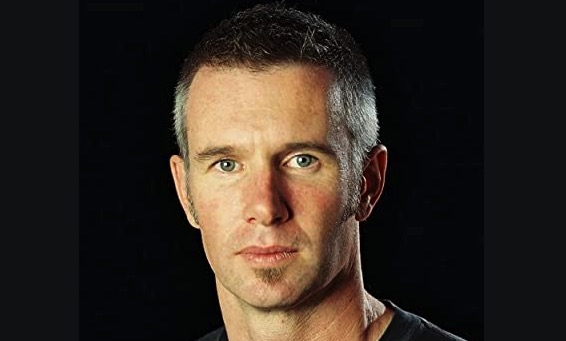
1962 – Trebor Healey is an American poet and novelist. He was born in San Francisco, raised in Seattle, and studied English and American Literature at the University of California, Berkeley. He spent his twenties in San Francisco, where he was active in the spoken word scene of the late 1980s and early 1990s, publishing five chapbooks of poetry as well as numerous poems and short stories in various reviews, journals, anthologies and zines. In 2013 Lambda announced Trebor Healey as an outstanding mid-career novelist and the next day he won his second Ferro-Grumley Award for his moving, road trip novel A Horse Named Sorrow, also a Lammy finalist and still not released in paperback. It was published in October 2012 simultaneously with his speculative young adult novel Faun, about a boy whose changes at puberty are hairier and more pointed than yours were. Trebor won his first Ferro-Grumley, and a Violet Quill award, for Through It Came Bright Colors about 21-year-old suburban good boy Neill who breaks the stress of his family's struggles with his brother's cancer by sneaking into San Francisco for sex with men. Trebor's other books are Sweet Son of Pan, A Perfect Scar, and Queer and Catholic. His work is anthologized in many collections including Madder Love: Queer Men and the Precincts of Surrealism and multiple volumes of Best Gay Erotica. Fifteen years before he was a PEN Emerging Voices mentor, he wrote a song for Pansy Division called Denny that foreshadows his fiction: smart, dark, quirky, angry, and funny. He is openly gay and is currently living in Los Angeles.
1969 – Kenji Yoshino is a legal scholar and the Chief Justice Earl Warren Professor of Constitutional Law at New York University School of Law. Formerly, he was the Guido Calabresi Professor of Law at Yale Law School. His work involves Constitutional law, anti-discrimination law, civil and human rights, as well as law and literature, and Japanese law and society. He is actively involved with several social and legal issues and is also an author. His first book Covering: The Hidden Assault on Our Civil Rights was published in 2006. It is a mix of argument intertwined with pertinent biographical narratives. His second book, A Thousand Times More Fair: What Shakespeare's Plays Teach Us About Justice was published in 2011. In 2016, his book "Speak Now: Marriage Equality on Trial" was published. Covering won the Randy Shilts Award for Gay Non-Fiction from Publishing Triangle in 2007. His major areas of interest include social dynamics, conformity and assimilation, as well as queer (LGBT) and personal liberty issues. He has been a co-plaintiff in cases related to his specialties. A Japanese American, and openly gay man, Yoshino also writes poetry for personal enjoyment which has yet to be published. He is married to Ron Stoneham and the couple have two children.
1974 – Gay activists march in Portugal, for the first time, demanding an end to the country's sodomy laws and a repeal of all statutes that discriminate against Gays and Lesbians.
1975 – Maine Legislators decriminalized homosexuality between consenting adults in private by repealing its sodomy laws, and lowering the age of consent to 14.
1975 – Published reports confirm that Paul Newman is having financing trouble with his attempt to bring an adaptation of the Gay classic "The Front Runner" to screen. Newman eventually allows his option to lapse.
1976 – Christopher Street magazine debuts. The gay-oriented magazine published in New York City was known both for its serious discussion of issues within the gay community and its satire of anti-homosexual criticism. It was one of the two most-widely read gay-issues publications in the United States. Christopher Street covered politics and culture and its aim was to become a gay New Yorker. The magazine featured original fiction from such notable authors as Andrew Holleran as well as emerging new gay writers. Christopher Street printed 231 issues before closing its doors in December of 1995.
1977 – Wyoming decriminalizes private consensual adult homosexual acts.
1990 – Oklahoma bans nursing home employment by those convicted of sodomy, whether consensual or not.
1996 – In the Australian Capital Territory, a policy went into effect allowing gay partners to have their inheritance rights recognized under probate law.
1997 – Tasmania becomes the last state in Australia to decriminalize homosexuality.
2013 – Samoa’s Sodomy Crimes Act goes into effect with a sentence of up to five years in prison. "Keeping a place of homosexual resort" is also a crime.
|
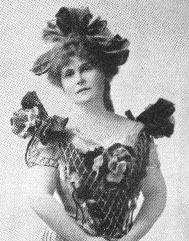
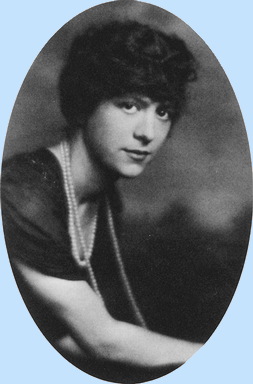
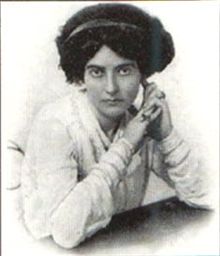
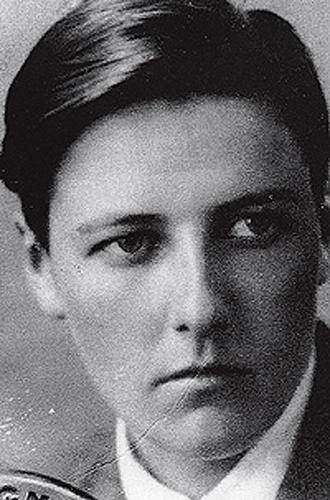
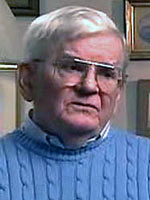
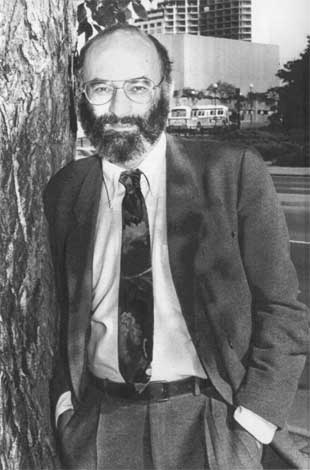
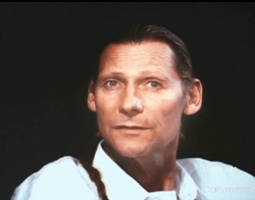

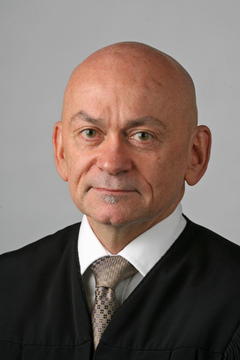

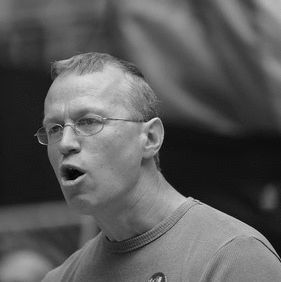

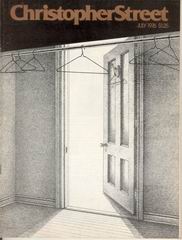 The First Issue
The First Issue